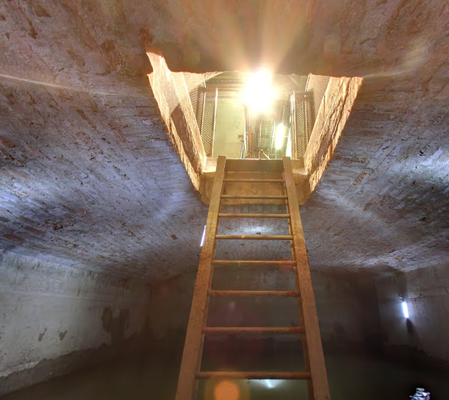About
Beneath the opera house, Palais Garnier, there sits a water tank, and some folks say that once a man lived there who had no face. “The Phantom of the Opera” was based upon this place.
That tank, which has been referred to as a lake and a lagoon, inspired Gaston Leroux, a crime reporter and theatre and opera critic, to use it as a setting in his classic novel. In the book and hit musical that followed, the cellar serves as the tragic figure's dark and eerie lair. But originally, it was a purely practical part of Charles Garnier’s opera house design.
When the foundation was being built in 1862, a combination of wells and steam pumps operating 24 hours a day could not keep the groundwater away for long enough to lay the substructure. Garnier incorporated a cistern into his design to redistribute the water and relieve the water pressure on the basement walls. It also kept the water available in case of a fire.
Among the other real-life events that served to inspire the novel (a chandelier really did fall and kill someone there) is the use of the unfinished opera house by the Paris Commune in 1871 to store food and ammunition. The group took over Paris with the National Guard following the Franco-Prussian War, and set up a base camp in the unfinished building because of its proximity to Place Vendôme, where the Guard was fighting the French Army. Work on the building recommenced once the French Army had retaken the city.
In 1907, a time capsule with 24 phonographic recordings of opera singers of the time was buried in the cellar of the opera house. Leroux claimed that the body of a disfigured architect named Erik was found during the process. While that is not believed to be true, random bodies were being unearthed around the time Leroux was writing Phantom (1907-1910), thought to be “victims of the Commune,” which may have used the cellars of the Palais Garnier to hold prisoners.
Today, the entrance to the tank is covered, except for a small grate, and the alcoves and arches above the watery cellars are lit for health and safety reasons. The opera house’s technical rooms occupy the space that Leroux claimed to be the Phantom’s lair. Firefighters use the tank to practice swimming in the dark.
Related Tags
Know Before You Go
Palais Garnier is open every day from 10am to 5pm, unless otherwise indicated on the website (for instance, it closes at 1pm on days when there are matinee performances). You can get to the Opera Station by Metro lines 3, 7, and 8, by bus on routes 20, 21, 22, 27, 29, 42, 52, 53, 66, 68, 81, and 95. You can also park a car at the nearby Galeries Lafayette, across Boulevard Haussmann. Tickets are available on the website.Visitors are not permitted near the tank. Employees of the opera house are not permitted near the tank. Some will deny the reservoir exists, though it is still used to train firemen for underwater rescues.
Community Contributors
Added By
Published
June 6, 2017
Sources
- https://www.operadeparis.fr/en/visits/palais-garnier
- http://www.messynessychic.com/2014/08/26/unmasking-the-parisian-phantom-of-the-opera/
- http://www.thephantomoftheopera.com/background/paris-opera-house
- http://www.telegraph.co.uk/culture/7244338/Where-the-Phantom-was-born-the-Palais-Garnier.html
- https://en.wikipedia.org/wiki/Paris_Commune
- https://en.wikipedia.org/wiki/National_Guard_(France)#End_of_the_National_Guard
- https://en.wikipedia.org/wiki/Gaston_Leroux
- https://en.wikipedia.org/wiki/Palais_Garnier#1870.E2.80.931871
- https://en.wikipedia.org/wiki/The_Phantom_of_the_Opera
- https://www.youtube.com/watch?v=1hmM5d4aWD0
- https://cosmopoliclan.com/travel-with-kids/inspiration/paris-opera-house-garnier/



































